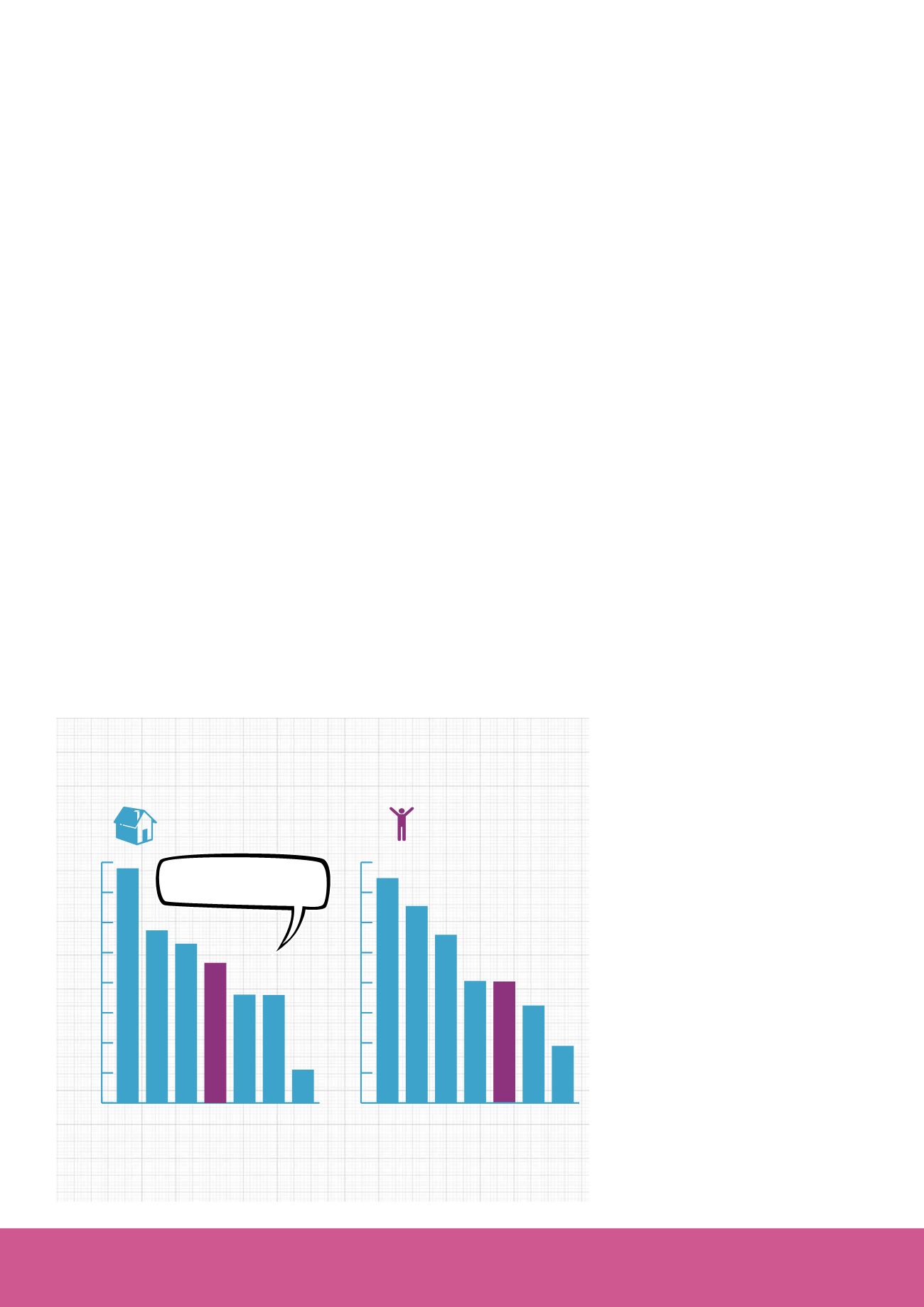
ISSUES
: The Internet of Things
Chapter 2: Our digital future
34
was co-founded by inspirational
professor and surgeon, Dr Shelly
Batra. In partnership with Microsoft
Research, she developed an
innovative, portable biometric
tracking system called eCompliance
that has taken TB treatment to the
doorsteps of rural communities and
slum dwellers across India.
eCompliance aims to improve
successful completion of TB
patients’ full treatment regimen,
reducing the default rate that
is contributing to the rise of
new, drug-resistant, strains of
the disease (MDR-TB). Limited
resources
and
infrastructure
mean that health professionals
struggle to track their patients
comprehensively. As a result, India
has the highest prevalence of MDR-
TB of any country in the world.
Operation ASHA uses fingerprint
recognition and SMS messaging
to ensure patients are adhering
to their treatment regimens. At
each clinic visit, both the patient
and the healthcare worker scan
their fingerprints, medication is
dispensed and the treatment is
recorded in the system’s database.
If a patient misses a dose, an
SMS message alert is sent to the
patient and healthcare worker. The
digitisation of the patient records
also enables accurate reports to
be produced and allows targeted
counselling to be provided.
There are now over 130 community
centres in India with eCompliance
terminals, and over 220,000 visits
have been logged. The default rate
for patients on the programme has
been reported in the
BMJ Open
as
an amazingly low 3.2%, compared
with 11.5% at other South Delhi TB
treatment centres. The model has
now been rolled out in Cambodia,
Dominican Republic, Kenya and
Uganda.
Empowering women by
creating safe public spaces
A survey conducted by the
AssociatedChambers of Commerce
and Industry of India found that 92
per cent of working women across
many cities felt insecure, especially
at night. One project that aims to
empower women by encouraging
them to tell their harassment stories
is Safecity, a mobile and online
community founded by Elsa D’Silva,
who was herself inspired by the
success of other crowd-mapping
initiatives.
Shortly after the now infamous
gang rape of a medical student on
a Delhi bus, Elsa devised the idea
for women to use a phone app to
map hotspots of abuse. Talking to
The Guardian
, she says: “That was
when everything lined up and I said
to myself: safety and security need
to be urgently addressed. Until then,
not many of us were even talking
about it actively or openly enough,
including me. It was that rape that
really got me thinking more actively
... then I started to remember the
various incidents that had taken
place in my own life.” Her personal
silence broken, D’Silva began to
talk to friends: “I realised that every
one of them had a story to share,
but until then we had never really
spoken about it.”
Safecity also aims to use the data
it collects to inform future urban
planning, for example highlighting
areas which currently have little or
no street lighting. Elsa hopes the
project will encourage the Indian
Government to improve legislation
on gender equality by creating a
louder voice for women’s safety and
rights. Already, over 4,000 stories
have been collected on Safecity
from 50 Indian cities.
Digital technology is the tool helping
these inspirational women respond
to challenges surrounding gender
inequality. You can find out more
about these and others like them
at socialtech.org.uk, the world’s
largest database of tech for good
projects.
7 March 2016
Ö
Ö
The above information is
reprinted with kind permission
from Nominet Trust. Please
visit
for further information.
© Nominet Trust 2016
This article was originally featured
on the Huffington Post UK website
at
.
co.uk/vicki-hearn/tech-women-
india_b_9398532.html.
Internet access and use by region, 2014
Of the 4.3 billion people not yet using the Internet, 90% live in developing countries. In the world’s 42
Least Connected Countries (LCCs), which are home to 2.5 billion people, information and communication
technology remains largely out of reach, particularly for these countries’ large rural populations.
Source:
Closing the Internet gap
, EurActiv.com, 4 December 2014
The least connected countries are
mostly in
Sub-Saharan Africa
and in the
Indian subcontinent
.
Percentage of households with
Internet access by region, 2014
Percentage of individuals using
the Internet by region, 2014
0
10
20
30
40
50
60
70
80
Europe
The Americas
Russian and CIS
World
Arab States
Asia and Pacific
Africa
Europe
The Americas
Russian and CIS
World
Arab States
Asia and Pacific
Africa
0
10
20
30
40
50
60
70
80
Per 100 inhabitants
Percentage (%)
78.0
57.4
53.0
43.6
36.0 35.9
11.1
74.8
65.5
55.9
40.6
40.4
32.4
19.0


